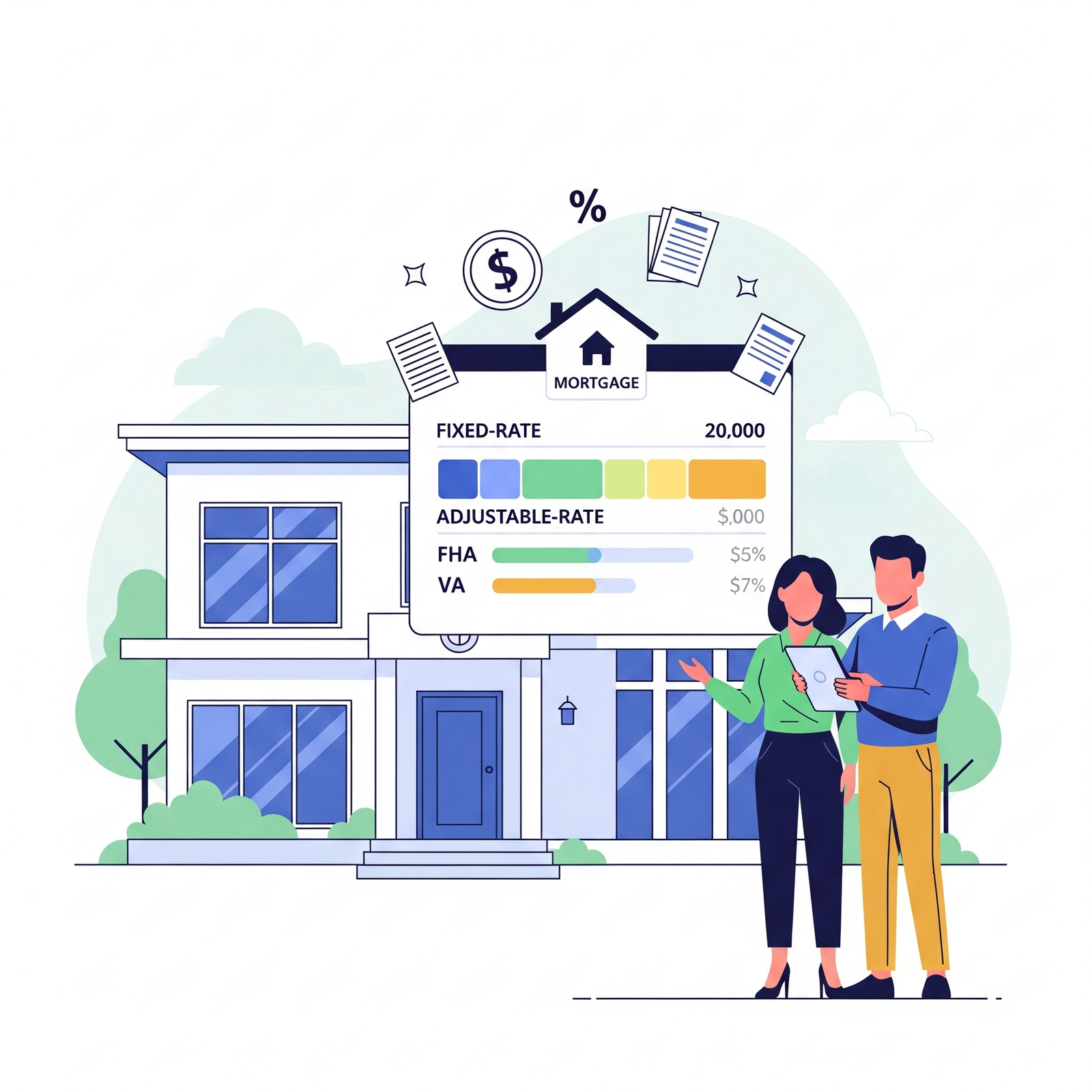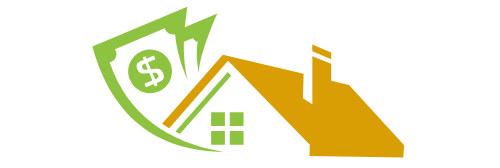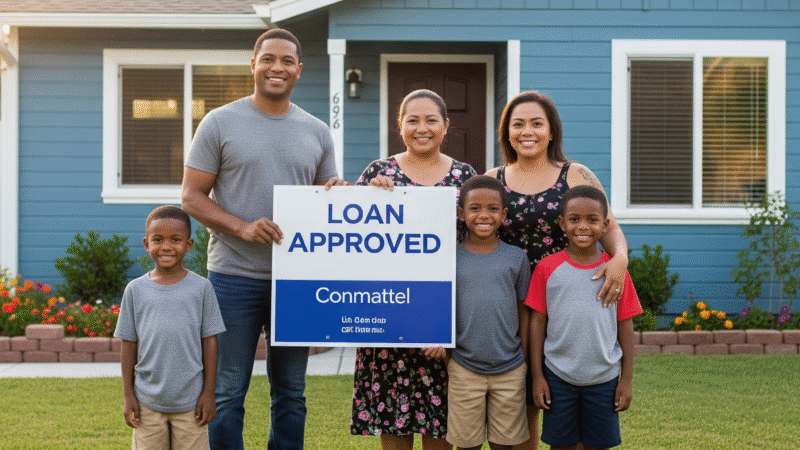Types of House Mortgages: Which One Fits Your Budget?

Do you remember that warm feeling as a kid when you would draw your dream house? A place all your own, with a yard for the dogs to run, a swing on a tree, and a kitchen filled with the smell of freshly baked cake. That dream, which once seemed so far away, often stays alive inside us, even as adults. The desire to have a little corner to call your own, a safe haven for your family, is one of the most genuine wishes we can have.
However, when we start thinking about making that dream a reality, an avalanche of doubts and fears can overwhelm us. Words like “mortgage,” “interest,” and “financing” sound like a seven-headed monster—complicated and scary. It’s normal to feel butterflies in your stomach. After all, for most of us, buying a house is the biggest investment of our lives. But what if I told you that understanding the types of house mortgages can be simpler than it looks? What if, together, we could unravel this mystery and find the path that will lead you to the front door of your new home?
This article is a chat between friends. I want to take you by the hand and show you, in an easy, no-nonsense way, that there are different paths to making the dream of homeownership come true. Let’s forget the technical terms and the financial jargon. Let’s speak your language, with everyday examples, so you can feel secure and confident in making the best decision for you and your family. Because your dream deserves to be treated with care and, above all, with clarity.
Demystifying the Mortgage: What It Is and How It Works
Imagine you really want to buy a car, but you don’t have all the money saved up. What do you do? You usually go to a bank or a lender and ask for a loan. With a house, the logic is similar, but the loan is usually much larger and has a longer term to pay it off. A mortgage is simply a big loan you get from a bank to buy your property. And to guarantee that you’ll pay it all back correctly, the house you’re buying serves as collateral for the bank.
It’s as if you’re telling the bank, “Lend me the money to buy my little house, and if something goes very wrong and I can’t pay, you can take the house so you don’t lose out.” Of course, nobody wants that to happen, which is why it’s so important to choose the right type of financing—one that fits your budget without squeezing you.
The different kinds of mortgages exist to adapt to different realities and needs. There is no magic formula that works for everyone. What’s good for your neighbor might not be ideal for you. Therefore, knowing your options is the first step to making a smart and peaceful choice.
Getting to Know the Main Types of House Mortgages
Now that we’ve covered the basics, let’s dive into the main types of house mortgages. Think of them as different types of shoes: some are more comfortable for long walks, others are more elegant for special occasions. Your mission is to find the perfect pair for your journey.
Fixed-Rate Mortgage: The Security of Knowing What You’ll Pay
Think of a fixed-rate mortgage as a deal that never changes. From the first day to the last day of your loan, the interest rate will be exactly the same. This means that your monthly payment amount also doesn’t change, no matter what happens in the economy.
How does it work in practice?
Let’s say you took out a loan with a fixed interest rate of 6% per year, to be paid over 30 years. Your payment will be calculated based on this rate and will remain the same for the next 360 installments. Come rain or shine, you know exactly how much will come out of your pocket each month to pay for your house.
Who is it ideal for?
- For those who like predictability: If you’re the type who likes to have all your bills accounted for and wants no surprises in your budget, a fixed rate is your best friend.
- For those on a tighter budget: Knowing the exact payment amount helps with financial planning and avoids scares at the end of the month.
- For those who believe interest rates might go up: If the economic outlook suggests a trend of rising rates, “locking in” your rate now can be an excellent move to save money in the future.
Suggested Image: A calendar with the same payment amount written on every month, with a smiley face next to it.
Alt Text: Calendar illustrating the stability of a monthly payment on a fixed-rate loan, one of the safest types of mortgage loans.
Adjustable-Rate Mortgage (ARM): A Bet on the Economy
Unlike a fixed-rate mortgage, an adjustable-rate mortgage (ARM), as the name suggests, can change over time. It’s tied to an economic index, like the SOFR (Secured Overnight Financing Rate) or other benchmark rates. If this index goes up, your interest and your payment go up. If it goes down, you pay less.
How does it work in practice?
Typically, the contract defines a review period, which could be every 6 or 12 months, for example. On these dates, the bank will look at the benchmark index and adjust your interest rate for the next period. Initially, adjustable rates are often lower than fixed rates, which can be very appealing.
Who is it ideal for?
- For those with a good cushion in their budget: Since payments can increase, it’s important to have a financial margin to absorb these hikes without struggling.
- For those who believe interest rates will fall or stay low: If you’re an optimist and believe the economy will do well, you could benefit from lower payments.
- For those who don’t plan to stay in the property for a long time: If you plan to sell the house in a few years, the risk of a major rate hike is lower.
Hybrid Mortgage: The Best of Both Worlds?
What if you could have the security of a fixed rate and the potential savings of a variable rate? That’s the idea behind a hybrid mortgage.
How does it work in practice?
With this type of mortgages, you get a fixed rate for an initial period (for example, the first 5, 7, or 10 years of the loan). During this time, your payment doesn’t change, giving you complete predictability. After this period, the rate becomes adjustable, following market fluctuations until the end of the contract.
Who is it ideal for?
- For those who want security at the beginning: It’s perfect for those starting out, organizing their finances, and wanting stability in the first few years, which are often the most challenging.
- For those who want a “trial period”: It offers time to adapt to the new financial reality of owning a home, with the possibility of benefiting from a drop in interest rates in the future.
Other Mortgage Loan Types You Might Encounter
Besides the main three, there are other mortgage loan types that might appear in your search. It’s good to know them, even if they are less common.
Government-Backed Loans: A Helping Hand to Buy Your First Home
Often, the government creates special programs to help people buy their first home, especially young people. These programs can offer more favorable conditions, such as lower interest rates or the ability to finance a larger percentage of the property’s value.
- Advantages: They often have less stringent credit requirements and require a smaller down payment. In the U.S., programs like FHA loans are an example of how the government can facilitate access to housing.
- Keep an eye out: It’s always a good idea to research if there are any active programs in your city, state, or country that fit your profile.
Construction Loans: Bringing the Blueprint to Life
If your dream isn’t to buy a ready-made house but to build your own from scratch on a lot you’ve chosen, there’s a specific type of financing for that. The bank releases the money in stages as the construction progresses. It’s a slightly more complex process, but it allows you to have a fully customized home.
How to Choose the Right Loan for Your Life?
Okay, now you know the main types of house mortgages. But the million-dollar question remains: which one is best for me? The answer lies in taking a good, honest look at your own life.
1. Look at Your Wallet (Honestly)
The first step is to understand your financial reality.
- How much do you earn per month?
- What are your fixed expenses (rent, bills, school, etc.)?
- How much is left over at the end of the month?
A golden rule, often used by banks, is that the mortgage payment should not exceed 30% of your gross family income. This ensures you’ll have money for other expenses and for emergencies.
2. Think About Your Future Plans
Where do you see yourself in 5, 10, or 20 years?
- Do you plan to stay in this house for a long time and build your life there? If the answer is yes, a fixed rate can give you the peace of mind for long-term planning.
- Is there a chance you might move to another city for work? If your plans are more uncertain, perhaps a variable or hybrid rate, with lower initial rates, would be more interesting.
- Is your income likely to increase in the coming years? If you are at the beginning of your career and expect promotions, you might be able to handle a potential increase in payments from a variable rate in the future.
3. Simulate, Simulate, and Simulate Some More!
Don’t be lazy about research. Nowadays, most banks offer online simulators where you can test different scenarios.
- Use these tools to see what your payment would look like with each type of mortgage.
- Request proposals from different banks. Don’t accept the first offer you receive. Conditions can vary significantly from one institution to another.
- Compare the “fine print.” Besides the interest rate, look at the costs of mandatory insurance and other administrative fees that make up the Annual Percentage Rate (APR) of your loan.
A Word on Amortization: The Secret to Paying Less Interest
Imagine that, in a particular month, you have some extra money left over. You can use this amount to “amortize” your debt. Amortizing is simply paying off a portion of your loan’s principal, in addition to your monthly payment.
By doing this, you have two options:
- Reduce the loan term: You continue paying the same monthly payment, but for a shorter time.
- Reduce the payment amount: The term remains the same, but your monthly payments become cheaper.
Either option results in huge interest savings in the long run. Think of it as a superpower to pay off your house faster and for less money!
Conclusion: The First Step to Your Home, Sweet Home
Buying a house is an exciting journey. And, as with any great adventure, you need to be well-prepared. Understanding the types of house mortgages takes you out of the passenger seat and puts you in control. It’s not about memorizing difficult names, but about understanding how each option fits into your story, your dreams, and, of course, your budget.
Don’t be afraid to ask questions, to research, to talk to experts, and, most importantly, to listen to your gut. Choosing a mortgage is a very personal decision. The right path is the one that lets you sleep peacefully at night, knowing you made a conscious and safe choice for your family’s future.
Your dream house is closer than you think. Now that you have the map in hand, the journey becomes clearer and safer. Take a deep breath, take the first step with confidence, and get ready to open the door to your new home.
Key Points to Remember:
- A Mortgage is a Loan: It’s a large loan to buy a property, using the house itself as collateral.
- Fixed-Rate = Predictability: The interest rate and payment do not change throughout the contract, ideal for those seeking security and stability.
- Adjustable-Rate = Potential Savings (with Risk): The payment can rise or fall with the economy, making it an option for those with a budget cushion who can tolerate risk.
- Hybrid-Rate = Balance: It combines an initial period of a fixed rate (security) with a period of an adjustable rate (potential savings).
- Analyze Your Life: The ideal choice depends on your current financial situation and your future plans.
- Research and Simulate: Don’t accept the first proposal. Compare conditions from different banks to find the best offer.
- Amortization is Power: Using extra money to pay down the principal can save you a lot of money in interest.

